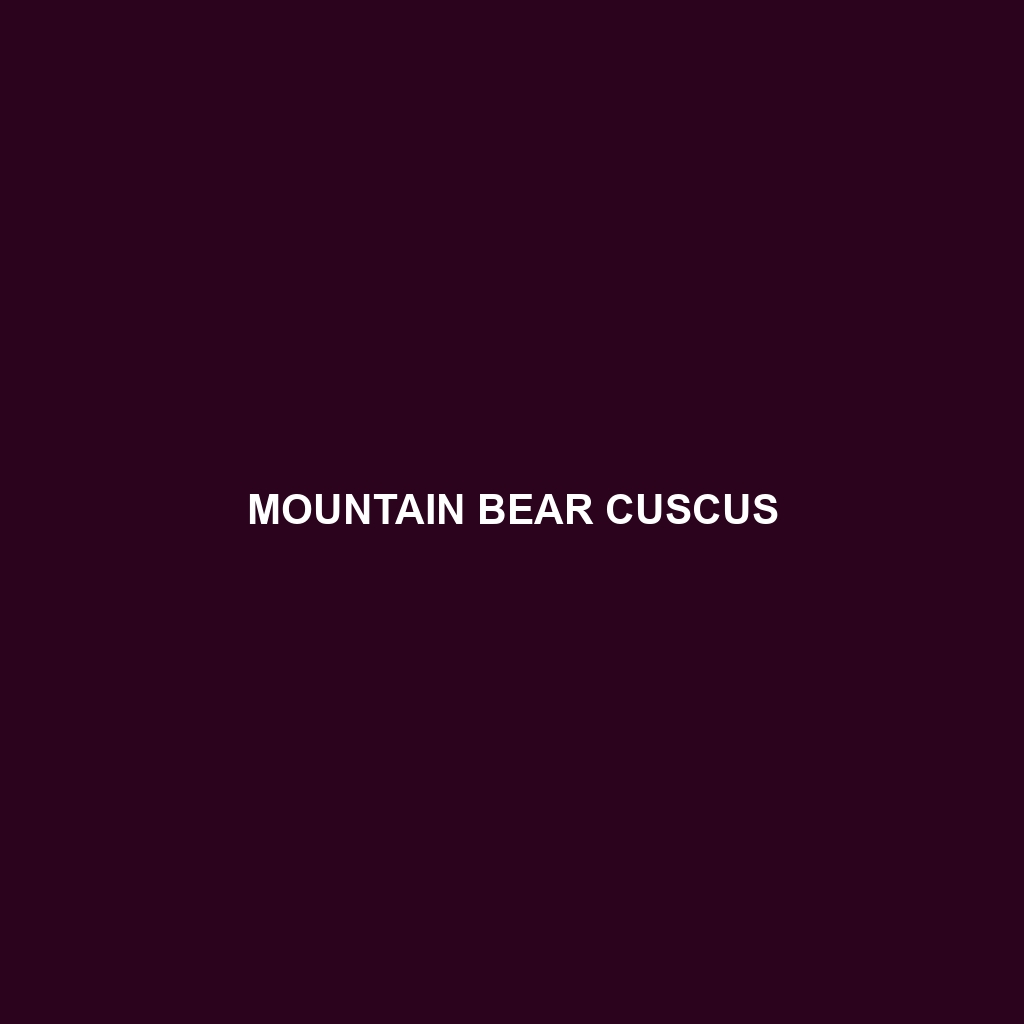Mountain Bear Cuscus: A Comprehensive Overview
The Mountain Bear Cuscus (Ailurops ursinus) is a fascinating marsupial native to the highland forests of Indonesia, specifically Sulawesi and nearby islands. Known for their unique bear-like appearance and arboreal lifestyle, these elusive creatures are a rare sight in the wild. Their distinctive features and behaviors make them a subject of great interest among wildlife enthusiasts and researchers.
Physical Characteristics
Size and Weight: Adult Mountain Bear Cuscuses typically range from 18 to 24 inches in body length, with a tail that can add an additional 16 to 22 inches. They generally weigh between 8 to 15 pounds.
Coloration: Their fur is thick and woolly, usually exhibiting a mix of gray, brown, and black hues which provides excellent camouflage against the bark and foliage of their arboreal habitat. Their underbellies are often lighter in color.
Special Features: The Mountain Bear Cuscus has a prehensile tail, which is strong and flexible, aiding in climbing and balancing in the trees. Their forelimbs and hind limbs have sharp, curved claws that enhance their grip on branches. A notable feature of their anatomy is their opposable thumbs, adding to their adeptness at maneuvering in a three-dimensional forest environment.
Behaviors
Social Interactions: Despite their solitary nature, Mountain Bear Cuscuses sometimes come together during the breeding season. They communicate through a series of vocalizations, including grunts and hisses, and use scent marking to establish territory.
Feeding Habits: These animals are primarily folivorous, feeding on a diet that consists mostly of leaves, fruits, and flowers. Their slow metabolism allows them to extract maximum nutrients from their fibrous diet. Occasionally, they may consume small invertebrates.
Ecological Role: As folivores, Mountain Bear Cuscuses play a crucial role in their ecosystem by aiding in the dispersal of seeds and the maintenance of forest health through their feeding activities.
Habitat and Adaptations
Natural Habitat: Mountain Bear Cuscuses inhabit the montane forests of Sulawesi, preferring elevations from 1,000 to 2,500 meters. These forests offer a dense canopy and a rich biodiversity that supports their dietary and shelter needs.
Adaptations: Their prehensile tail and strong limbs are key adaptations for an arboreal lifestyle. Additionally, their slow movements and nocturnal habits help them avoid predators, which are few in their high-altitude environments but include birds of prey and large snakes.
Conservation Status
The Mountain Bear Cuscus is currently classified as Vulnerable according to the IUCN Red List. Their populations are threatened by habitat destruction due to logging and agricultural expansion. Conservation efforts are focused on habitat preservation and the establishment of protected areas to ensure the survival of this unique species.
Fun Facts
Unique Name: The name “Bear Cuscus” comes from their bear-like appearance and their cuscus classification, which relates them to other possums.
Slow Metabolism: Their low metabolic rate means they move slowly and spend long periods resting, much like sloths.
Longevity: In the wild, Mountain Bear Cuscuses can live up to 11 years, while in captivity, they can reach up to 15 years or more.
Reproduction: Female Mountain Bear Cuscuses have a pouch where the young, usually one or two, develop post-birth, similar to other marsupials.
The Mountain Bear Cuscus is a remarkable example of the diversity and specialization found in highland forest ecosystems. Understanding and protecting these enigmatic creatures not only helps preserve a unique species but also the complex forest environments they inhabit.
